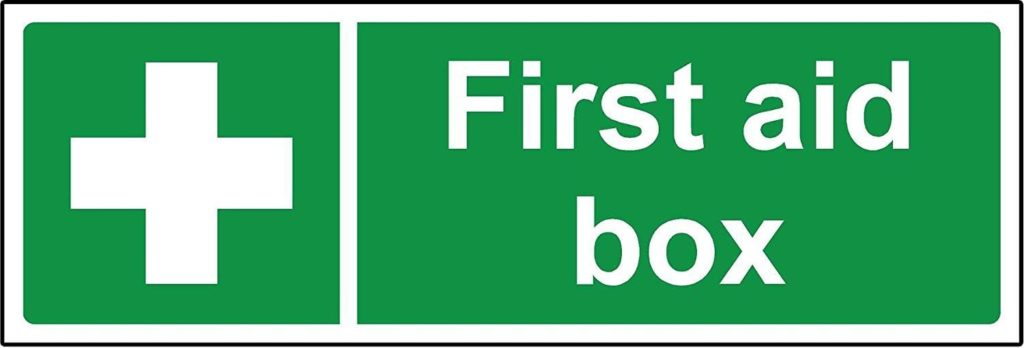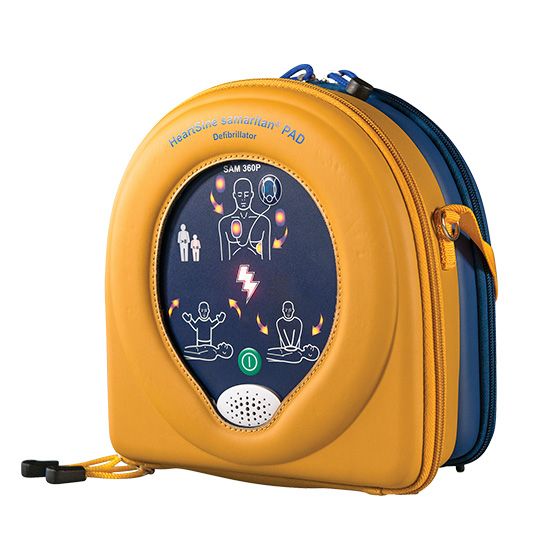A first aid kit is an essential item for the home, workplace, factory, office and many other settings. Keeping a first aid kit at your home, office or in the car is an easy way to make sure you have quick and ready access to first aid products when you need them.
First Aid Kits at Work
When considering first aid in the workplace, Safe Work Australia have developed an easy to use code of practice that provides practical guidance for managing first aid at work. All workplaces in Australia, including factories, warehouses, offices, schools and many others, are required to provide access to a first aid kit.
What’s in a First Aid Kit?
The first aid kit should contain basic medical equipment for administering first aid to injuries that may be sustained in the workplace, including:
- cuts, scratches, punctures, grazes and splinters
- muscular sprains and strains
- minor burns
- amputations and/or major bleeding wounds
- broken bones
- eye injuries, and
- shock.
The specific equipment within a first aid kit should be considered after a risk assessment for the workplace has been carried out. Generally, the equipment in a first aid kit should align with the risks of a particular workplace. For example, a workplace that involves use of chemicals may have a higher risk of eye injuries occurring to workers and should consider having adequate eye pads and cleansing solutions available in the first aid kit.
First aid kits come in many shapes and sizes to suit each workplace but should generally be large enough to contain all the necessary items (so that all first aid equipment is kept together), be immediately identifiable as a first aid kit, contain a list of the contents of the kit (to ensure adequate supply), and be made of a material that will protect the contents from dust, moisture and contamination.
It is important to note that Safe Work Australia’s code of practice on first aid in the workplace advises that kits for workplaces should not contain medications. First aid is the provision of emergency treatment and life support for people suffering injury or illness – the dispensing of medication does not generally fall within this definition.
We’ve included a handy checklist at the end of this guide with items that are commonly found in the best first aid kits. That said, always make sure you adjust the first aid kit contents to reflect the specific needs of your workplace or office.
Basic First Aid Equipment Explained
A first aid kit won’t help you if you don’t know how to use it. For most workplaces it is a requirement that someone on staff have completed a first aid course, and ideally all staff should be familiar with the contents of the kit.
The basic products you commonly find in a first aid kit include:
- Adhesive dressings – which are small strips of gauze attached to a sticky back and used for minor cuts and skin injuries. In Australia, we know these as bandaids! Please note that some people can be allergic to bandaids
- Non-adhesive dressings – strips of gauze without the sticky back. Best used for covering burnt, scraped or grazed skin
- Wound dressings –thick pads that are designed to help control bleeding and reduce the risk of infection (generally come in different sizes)
- Crepe or conforming bandages – these elastic bandages are used to apply pressure, hold other dressings in place, reduce swelling and provide some support (you may sometimes see the office footy bloke wearing one on his perpetually bad knee after the weekend), and
- Sterile eyewash solution – this is used to flush eyelashes, insects, dust, sand or similar particles that may have gotten trapped in someone’s eye.
Where Should a First Aid Kit be Located?
Quick access to a first aid kit is critical in the event of injury or illness. This means that you should ensure your first aid kit is located in a prominent location where it can quickly be accessed.
Generally, first aid kits should be located close to areas where there may be a higher risk of injury or illness (although remember that all workers must have access to a first aid kit!). For example, a university with science labs or design workshops should have first aid kits located at these areas.
Workplaces or homes with more than one storey should have one first aid kit available on each floor, and emergency plans displayed at a workplace should always have the location of first aid kits displayed on them. If possible, try to keep the first aid kit in a dry, cool location to help prevent any of the products inside (e.g. bandages) from expiring more quickly.
For workers on the go (for example, couriers, truckers, and rideshare drivers), a portable or car first aid kit should be available in the vehicle – although it’s important that these kits are properly secured to avoid them becoming a projectile in the event of a collision (first aid kits are supposed to help, not harm!).
Restocking and Maintaining First Aid Kits
Every workplace should have someone nominated to maintain and restock the first aid kit (generally the same person with first aid responsibilities). Monitoring and maintaining a first aid kit involves a couple of steps that this person should be familiar with:
- monitoring use of the first aid kit to ensure any items used are replaced as soon as possible after their use;
- carry out regular checks (including when the kit has not been used) to ensure that the kit still contains a complete set of the items required. It may be a good idea to have a contents checklist that can be signed and dated after each inspection; and
- ensure that the items in the first aid kit are in working order, have not deteriorated and are within their expiry dates.
Thankfully, maintaining a first aid kit is made simpler by the availability of first aid kit refills which are generally cheaper packs containing just the equipment inside a first aid kit (meaning you don’t need to repurchase another bag or box).

First Aid Signs
Making sure people can easily find your first aid supplies around the workplace or office is important. This means you should make sure you have well-recognised first aid signs placed around indicating where the kits are located.
Some familiar examples of these types of signs are:

Specialty Kits
If you have a speciality workplace or specific need, you may find that a basic first aid kit isn’t right for your particular usage.
For example, boat first aid kits are commonly housed in a water-resistant container with all the first aid equipment needed for treating basic injuries that can occurring in boating on and off the water. While 4WD first aid kits often having a massive range of first aid equipment included (including snake bite first aid products) owing to the wide range of circumstances 4WDers can find themselves in off the beaten track.
Home first aid kits will often include products for use with children, and car first aid kits will generally have products that work for injuries sustained on or near the road.
Other First Aid Equipment
Another piece of first aid equipment becoming increasingly common at workplaces and homes is a “automated external defibrillator” or AED. AEDs can substantially reduce the risk of fatality from cardiac arrest, particularly when there may be a delay in ambulance services arriving at a workplace.

The best thing about AEDs is that they are designed to be used by both trained or untrained people. When opened, they provide clear audible instructions walking the user through the process step-by-step. Further, they detect whether they have been applied correctly and instruct whether defibrillation is appropriate. AEDs also commonly keep records of when they have been used.
This makes AEDs an ideal piece of first aid equipment to keep around where there may be untrained members of the public. As with first aid kits, AEDs should be clearly visible and accessible at your workplace or office so that they can be quickly deployed when needed.
Where to Buy First Aid Kits and Equipment
First aid products are available from a wide variety of stores (which should tell you how popular and necessary first aid products are!).
SafetyFind merchants offer a big range of the best first aid kits and equipment, including first aid kits suitable for the car, home or workplace, as well as the most popular AED models. SafetyFind merchants can deliver across Australia, including Sydney, Melbourne, Adelaide, Brisbane, Perth, Hobart, the Gold Coast and all other major cities and regions.
So whether you’re looking for a workplace first aid kit, home kit, car or vehicle kit, marine kit or a refill to restock your existing kit, check out the range of first aid products on SafetyFind.
First Aid Kit Checklist
The Australian government HealthDirect website suggests that a basic first aid kit will generally contain:
- crepe bandages of varying widths
- hypoallergenic (skin) tape
- triangular bandages
- adhesive dressing strips (such as bandaids) in different sizes
- gauze swabs
- combine dressing pads (10cm x 10cm)
- non-stick dressing pads (7.5cm x 10cm)
- sterile eye pad
- alcohol swabs
- stainless steel scissors (sharp/blunt) 12.5cm
- disposable gloves
- stainless steel pointed splinter forceps (tweezers)
- shock (thermal) blanket
- safety pins
- notepad and permanent marker
- sterile saline tubes/sachets
- disposable resuscitation face shield
- antiseptic skin swabs
- stop itch cream, and
- first aid booklet.
While the Safe Work Australia code of practice proposes that a kit must generally have:
- Instructions for providing basic first aid, including CPR
- A notebook and pen
- A pocket resuscitation mask or face shield
- A minimum of 5 pairs of disposable examination gloves
- Gauze pieces in seven and a half cm length, sterile (three per pack, and a minimum of five packs)
- Eight bottles of saline solution (15 ml)
- Ten injury cleaning wipes
- One pack of 50 count fabric or plastic band aides (or other form of dressing strips)
- Ten single use Splinter probes
- One pair of tweezers or forceps
- One bottle of 50 ml antibacterial spray or liquid (this helps to fight germs)
- Six small non-sticky injury dressing/pad (sized 5×5 cm)
- One 10×10 cm-sized injury pad/dressing
- Three cotton bandages (5 cm-sized)
- Three 7.5 cm Conforming cotton bandage
- One 10 cm Crepe bandage (for serious bleeding and pressure application)
- One pair of scissors
- One roll of hypoallergenic adhesive tape
- One pack of six safety pins
- One medium Blood Pressure Control dressing No. 14,
- One large Blood Pressure Control dressing No. 15
- One Dressing Combination Pad, sized 9 x 20 cm
- One Plastic bag-clip seal
- Two triangular bandages (must be sized a minimum width 90 cm)
- One emergency rescue blanket (for hypothermia or shock)
- Four single-use eye pads, and
- Access to 20 minutes of clean running water or (if this is not available hydro gel)
- Instant ice pack (For the treatment of various bug bites or stings as well as soft tissue injuries).













